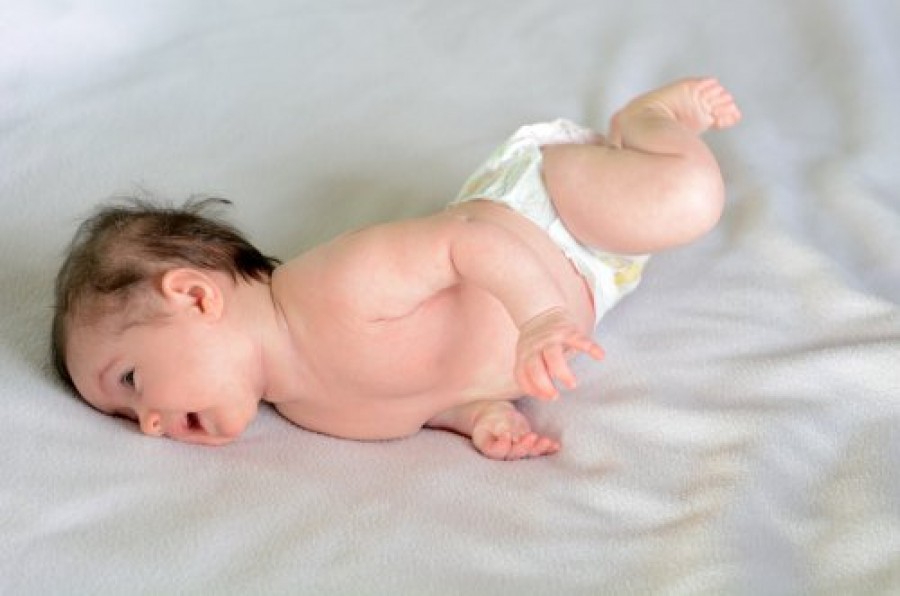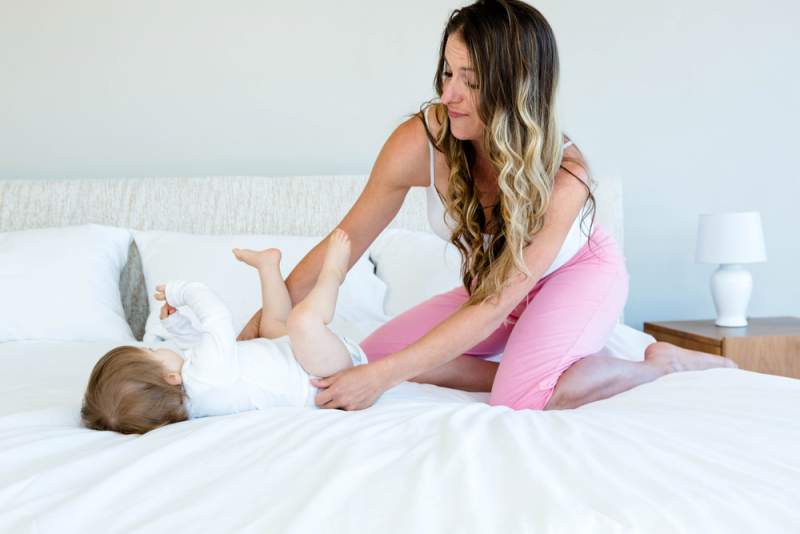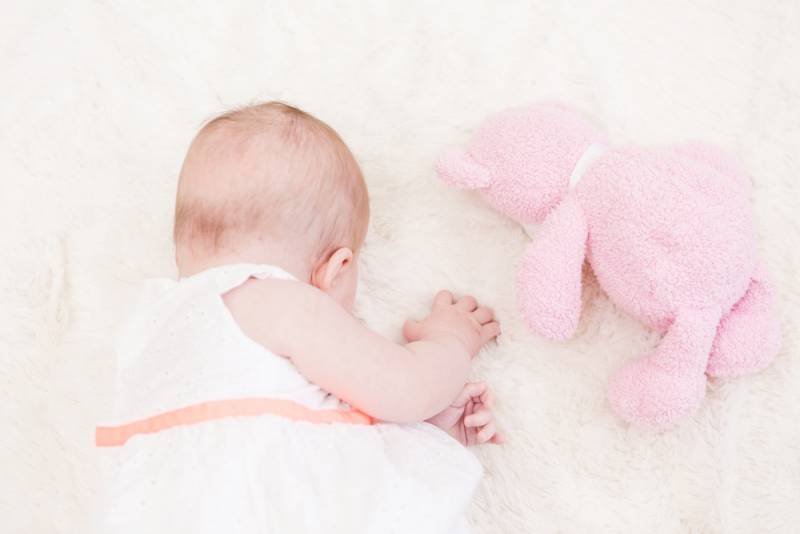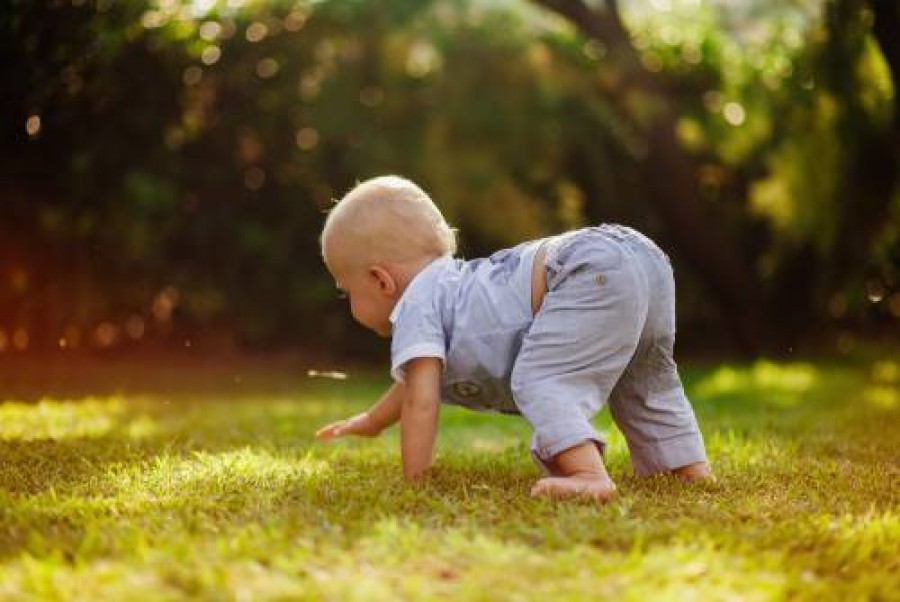Learning to Roll Over

After developing neck and head control, and mastering the ability to sit upright on their own, you will see your baby heading towards another development milestone – learning to roll!
This next stage of your baby’s mobility is a big one as it the first time they will start moving around on their own, trying to get to their favourite toys or move closer to you. It’s an exciting milestone to see your baby achieve.
When will my baby start learning to roll?
You might notice your baby is able to start rolling from their front onto their back as early as three months old, but it’s usually a bit later on that they are able to roll from their back onto their front. This normally happens around the 5 to 6 month mark and once your baby has properly developed the proper neck muscles and torso strength needed to roll over completely.
It’s around 6 to 7 months that you will your baby is comfortable rolling from side to side, front to back, and back again. You will also probably notice them start using this method of rolling to work their way around the room! It’s during this stage that you need to keep a close eye on your baby to make sure they stay safe, and never leave them unattended on the changing table once they have learnt to roll.
Every baby is different and will learn new things in different ways, at different times. Some babies don’t ever properly learn to roll over, they move straight on to sitting upright on their own and on to crawling. Some babies will stick with rolling as their main way of moving around. What is important is that your baby is curious, engaged and trying new ways of moving around and learning about their environment.

What are the stages of my baby learning to roll?
As mentioned above, you might see your baby attempting some rolling from as early as three months old, but here’s a breakdown of stages to look out when your baby is learning to roll:
1. Three-Four Months
During tummy time, you will notice your baby developing their neck strength and using their arms to hold their torso up and look around. It’s during this time that you will probably also notice them roll from their front onto their back – and your baby will probably surprise themselves at their ability to do this! Some babies are also able to roll from their back to their front, but not all and it is more common for them to roll from their front to their back.
2. Five Months
You will notice your baby is more confident holding themselves upright by their arms during tummy time, and you will probably also see them adopt the ‘swimmers’ pose – where they hold themselves on their tummy and kick out both their arms and legs. This is a good sign that they are building muscle strength and coordination, and that they’re testing their movements. You will notice that your baby uses their arms to push them over onto their back, and see them trying to figure out how they can roll back to their front. By this point, some babies may have already mastered rolling over onto their back, and front, and back again like pros!
3. Six Months
By six months your baby should be able to roll onto both their sides, front and back and you will probably see them being quite natural and confident holding themselves up on their sides, after trying to roll on to their back or front. Your baby will also have likely worked out they can use this as a method of moving around – so make sure you baby proof what they can get their hands on!
By 7 months most babies will have mastered the rolling development milestone and be quite comfortable putting it into practice!

What do I need to be aware of when my baby starts to roll?
You should be laying your baby to sleep on their back from birth, and tucking them in to make sure they do not accidently roll onto their tummy in the night. This helps to prevent sudden infant death, suffocation and other dangers to your baby while they sleep.
Most babies will not be able to roll onto their tummy until they are at least 5 or 6 months old. If your baby has started to learn to roll it is important that you still put this into practice and keep them safe while they sleep. Some other things you can do to keep your baby safe once they start learning to roll:
- Place your baby on their back to sleep – continue to do this and tuck their blankets in tight, but leave their arms free and allow them to find a sleeping position that is also comfortable for them and doesn’t hinder their movement development.
- Tuck in blankets – make sure your baby’s face is not covered and the end of the blanket is tucked in at their feet so that the blanket does not become tangled in your baby’s legs while they sleep and move around.
- Switch to a cot – if your baby is still sleeping in bassinette, now is a good time to move them into a cot so they have more freedom to move as they sleep. Make sure your cot mattress is firm, comfortable and not tilted or at an angle in any way.
- Keep your baby nearby – You can keep your baby’s cot in your room so they are close by if you do need to check on them in the night.
The risk of sudden infant death is very low in babies over the age of 6 months, and it’s normal for babies to move and roll around in their sleep. It’s important not to worry too much, but to also make sure they have a safe environment to sleep and develop in too. These simple steps can help make sure you keep your baby safe.

How can I help my baby learn to roll?
Most babies start to roll quite naturally, and almost by accident – that’s why they find it so surprising themselves the first few times it happens!
It’s important to let your baby develop at their own pace and find their own way when developing as this will help them to keep moving through their other development milestones. That said, there are a couple of things you can do to help encourage your baby along with their rolling:
- Plenty of Tummy Time – tummy time encourages your baby’s development in all sorts of ways – strengthening their torso, legs, back and arm muscles – all very important when learning to roll!
- Play with Your Baby – if you notice your baby starting to roll, encourage them by moving their toys a little further away to see if they will do it again. Tickle their tummy to encourage their movements, as they will probably try to move away from you while being tickled!
- Encourage and Support them – smile and verbally encourage your baby! This support from you can really help them to keep progressing with their development.
Seeing your baby start to roll for the first time can be really exciting and wonderful. It’s important to keep your baby safe as they develop this new mode of movement, so as mentioned, make sure you baby proof the rooms your baby is playing in – move electrical equipment out of arm’s reach and use safety plugs. Also make sure that you never leave your baby unattended on their changing table.
What should I do if my baby doesn’t start to roll on their own?
Babies develop differently; the main thing is to make sure your baby is alert, curious and attempting to move in new ways. As mentioned above, when it comes to rolling, not all babies will fully take to this stage, they might move straight into sitting up and crawling instead, or it might just take them a little longer than six months – and that’s all perfectly normal.
If by the six to seven month mark, your baby has not attempted to start moving around in different ways, they seem to particularly struggling, or are completely disengaged in from their environment, make sure you speak with your doctor or midwife who can reassure you and carry out extra tests if needed.
Baby Developmental Milestones
How your baby’s eyesight develops


